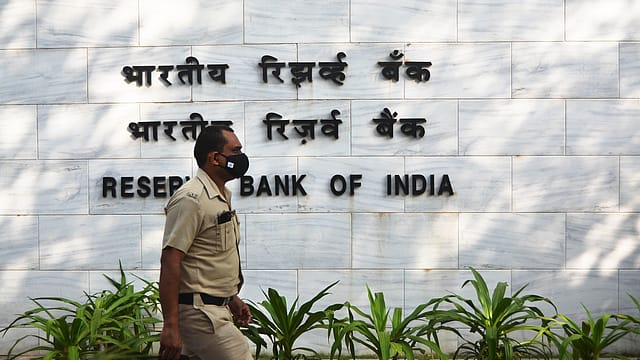Achilles’ heel in the making? RBI raises red flag on NBFC stress and shrinking bank support
ADVERTISEMENT

Even as the Indian financial system is being hailed for its resilience, a closer reading of the Reserve Bank of India’s (RBI) latest Financial Stability Report (FSR) reveals a warning sign quietly emerging in the non-banking financial sector.
According to the June 2025 FSR, revealed today, retail loan stress among non-banking financial companies (NBFCs) is rising noticeably, even though banks continue to show stable asset quality. While scheduled commercial banks (SCBs) reported a gross non-performing asset (GNPA) ratio of just 1.2% in their retail loan book, the GNPA for NBFCs in the same segment has climbed to 3.1%.
The RBI data also revealed that there was a sharp surge in retail loan growth among NBFCs, from near zero in March 2021 to over 35% by late 2022, which highlights a period of aggressive expansion in segments such as personal loans, consumer finance, and microcredit. This rapid growth likely reflects a post-pandemic rebound in credit demand, particularly from underserved or informal segments of the market. However, the pace has since moderated, with growth slowing to 21% by March 2025.
As RBI observed, this deceleration among NBFCs suggests a more cautious approach amid rising funding constraints and potential concerns over asset quality, especially as banks reduce their lending support to NBFCs.
Crucially, RBI data reveals that NBFCs are undergoing a retail stress test as banks grow increasingly cautious about lending to those exposed to unsecured and microfinance borrowers. Lending by banks to NBFCs had seen robust growth: rising from around 9% in March 2021 to over 35% by March 2023. But by March 2025, that growth rate plunged to just 5.9%, signalling a sharp pullback. This dramatic slowdown suggests heightened risk aversion among banks or emerging regulatory constraints, leaving NBFCs more vulnerable to funding pressures.
January 2026
Netflix, which has been in India for a decade, has successfully struck a balance between high-class premium content and pricing that attracts a range of customers. Find out how the U.S. streaming giant evolved in India, plus an exclusive interview with CEO Ted Sarandos. Also read about the Best Investments for 2026, and how rising growth and easing inflation will come in handy for finance minister Nirmala Sitharaman as she prepares Budget 2026.
The divergence in asset quality is particularly notable, as NBFCs have significantly increased their share in unsecured personal loans and microfinance segments in recent years.
NBFCs, including housing finance companies and fintech firms, account for 84.3% of all personal loans below ₹50,000, indicating their dominance in the small-ticket loan segment. However, the borrower profile in this category raises concerns. Around 10% of borrowers taking such loans already had overdue personal loans, and over two-thirds had more than three active loans at the time of taking the new one. This points to rising indebtedness and potential stress in the low-value personal loan market, RBI cautioned.
RBI also flagged a funding-side risk. Many NBFCs continue to depend on bank borrowings, but this channel has started to tighten. Some NBFCs have turned to foreign currency borrowing, and only about 80% of this exposure is hedged, exposing them to potential currency and rollover risks.
The report also mentions a marginal deterioration in the Non-Banking Stability Indicator (NBSI), driven by rising credit risk and interconnectedness, especially among upper-layer and middle-layer NBFCs.
Simply put, the NBSI is a tool used by financial regulators, like the RBI, to check how stable and healthy the non-banking financial sector is — that is, companies like NBFCs and other financial institutions that aren’t traditional banks.
RBI, however, also observed that despite these emerging risks, NBFCs remain above regulatory capital thresholds, and the sector as a whole continues to grow.
However, RBI’s analysis subtly warns that if macroeconomic conditions worsen through interest rate shocks, global volatility, or consumer distress, NBFCs could be more vulnerable than their banking counterparts.
Early signs of stress in unsecured retail loans may get worse in the coming months, especially if borrowing becomes costlier or fewer people take new loans.
